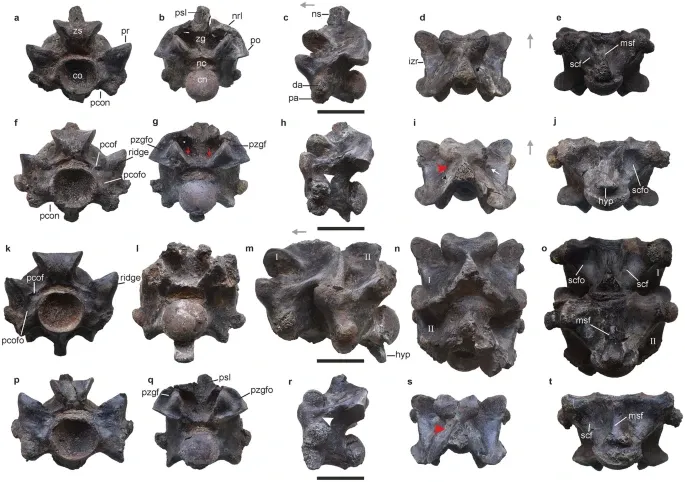
This discovery challenges the previous record-holder, Titanoboa, for the title of the biggest snake known.
To give an another perspective, the snake fossil estimated at up to 15 metres (~ 50 Foot) in length – longer than a T rex.
The fossil was found in the lignite mines of Gujarat and is believed to have lived around 47 million years ago in the marshy swamps of Kutch. Despite its enormous size, the snake is thought to have had a surprisingly gentle demeanor, suggesting it was a swamp-dwelling giant.
 |
| Geological map of Kutch Basin showing fossil locality |
This discovery not only provides insight into the past ecosystems of India but also adds a significant chapter to the history of these fascinating reptiles. The Vasuki Indicus could have been an ambush predator, similar to modern-day pythons, relying on constriction to subdue its prey. The research and findings regarding this giant snake have been published and are contributing to our understanding of prehistoric life on Earth.
The size of Vasuki Indicus was estimated using predictive regression equations based on the dimensions of the snake's vertebrae.
The size of Vasuki Indicus was estimated using predictive regression equations based on the dimensions of the snake's vertebrae.
 |
| Anterior trunk vertebrae of Vasuki indicus. |
The researchers analyzed 27 well-preserved vertebrae from the specimen to estimate these sizes. The vertebrae measured between 37.5 and 62.7 millimeters in length, which indicated a large-bodied snake. This method is a standard approach in paleontology for estimating the size of extinct animals when complete skeletons are not available.
These estimations suggest that Vasuki Indicus could have been longer than the previously known largest snake, Titanoboa.
Story behind the discovery
The discovery of Vasuki Indicus is quite an interesting story. The initial fossil remains were found in the Panandhro Lignite Mine in Kutch, Gujarat, almost two decades ago, around 2005. At that time, the fossils were believed to belong to a prehistoric species of crocodile and were stored away without further examination.It wasn't until 2024 that the true nature of the fossils was realized. Debajit Datta, a postdoctoral fellow at the Indian Institute of Technology Roorkee (IITR), began examining the fossils and noticed anatomical features that were not crocodilian but rather snakelike. This led to a more detailed investigation, where Datta, along with IITR paleontology professor Sunil Bajpai, cleaned and identified 27 relatively preserved vertebrae. These vertebrae ranged between roughly 1.5 and 2.5 inches long and 2.5 and four inches wide, which suggested they belonged to an adult snake of considerable size.
The researchers' analysis revealed that these remains were from a previously unknown species of snake, which they named Vasuki Indicus after the mythological serpent king associated with the Hindu deity Lord Shiva. This discovery has shed light on the ancient biodiversity of India and contributes significantly to our understanding of the evolution and distribution of large snake species during the Eocene period.
Study published at – Nature
Advertisements
